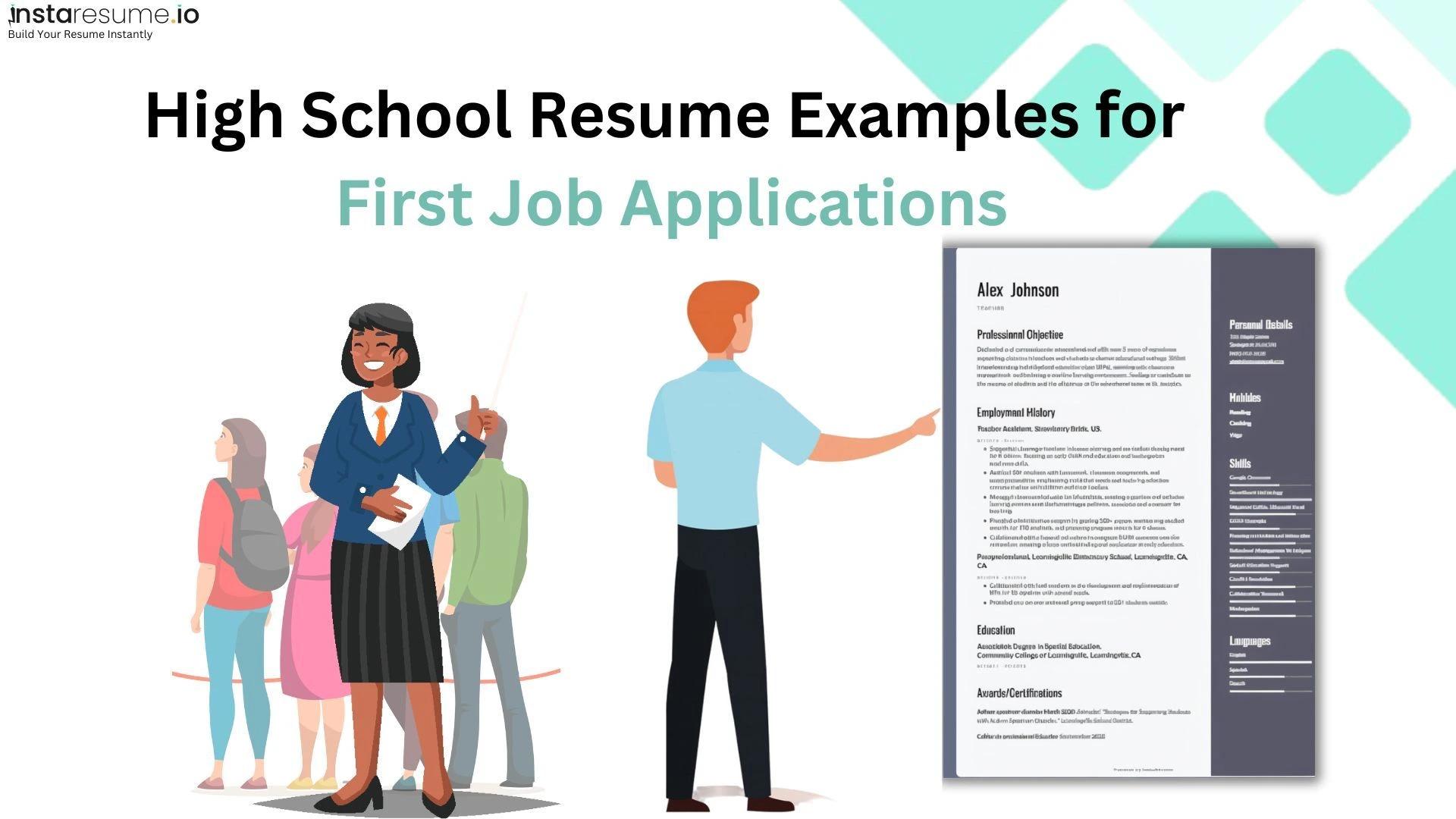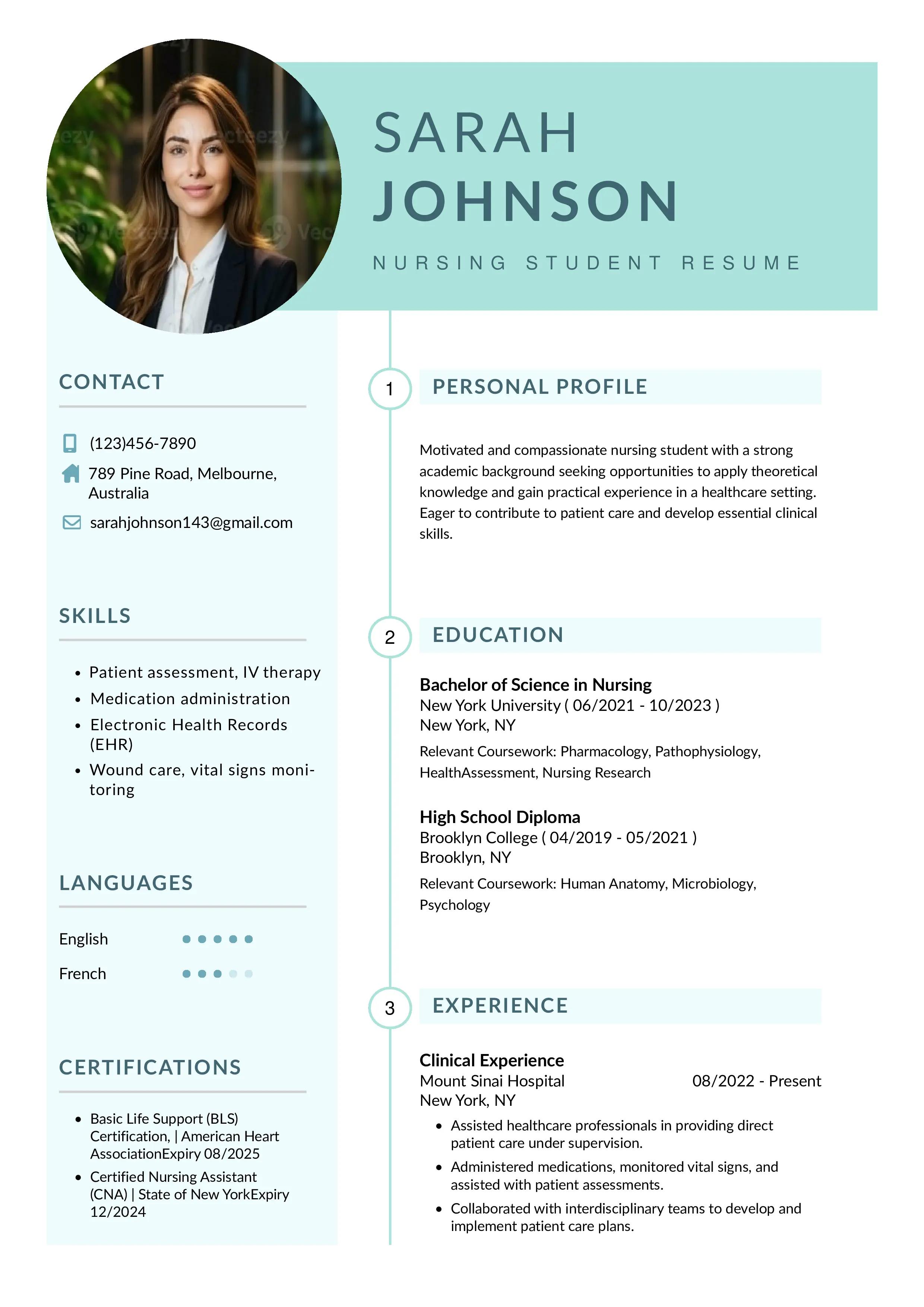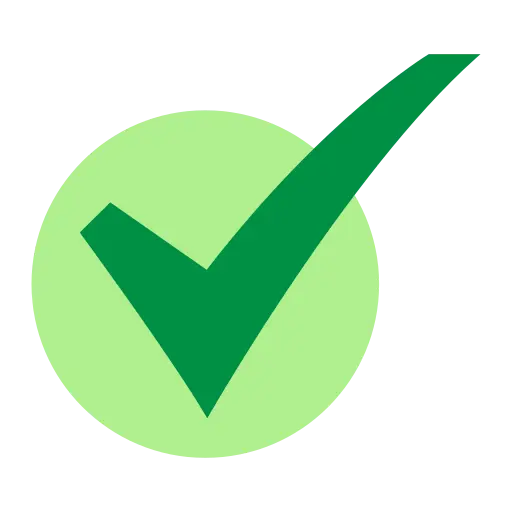High School Resume Examples for First Job Applications
Trust Score: 4.8
353 reviews

Table of Contents
Introduction
Applying to college is no longer just about grades and test scores—admissions officers want to see who you are beyond the classroom. That’s where a well-crafted college resume comes in. But how do you make a college resume as a high school student with limited experience?
You can turn to ChatGPT for resumes and generate a cover letter without a hassle. However cool that may sound, the process is still daunting and overwhelming, and you risk getting a generic application.
If you’ve ever asked yourself, “What should I put on a college resume in high school?” or “Do colleges even care about resumes?”, this blog is for you. A college resume helps showcase your strengths, leadership roles, academic achievements, and extracurriculars in one place, giving admissions teams a clear picture of your potential.
What Makes a Good College Resume for High School Students?
A college resume for high school students isn’t just a list of activities—it’s your first impression on admissions officers. While many people associate resumes with job applications, they’re increasingly used in college admissions, scholarship opportunities, and even summer internships. That’s why learning how to make a resume in high school can give you a serious edge.
Because admissions officers often spend less than 60 seconds reviewing each resume, presentation is everything. Focus on clarity, relevance, and structure. Use clean formatting, consistent spacing, and bullet points to make your resume skimmable. Keep it to one page and choose readable fonts like Arial or Calibri.
📌Format Tips:
 Stick to one page
Stick to one page Use bullet points, not long paragraphs
Use bullet points, not long paragraphs Font size: 11–12 pt
Font size: 11–12 pt Section headers: Bold or capitalized
Section headers: Bold or capitalized Save your resume as a PDF for consistency
Save your resume as a PDF for consistency
Now, let’s talk relevance. Not all activities are created equal. A smart approach is to tailor your resume to the type of college or program you’re applying to. For example:
 STEM applicant? Highlight science fair projects, robotics clubs, coding bootcamps
STEM applicant? Highlight science fair projects, robotics clubs, coding bootcamps Business major? Include fundraising experience, DECA involvement, or entrepreneurship
Business major? Include fundraising experience, DECA involvement, or entrepreneurship Arts? Add performances, exhibitions, or creative portfolios
Arts? Add performances, exhibitions, or creative portfolios
Lead with your most impressive, relevant experience. That could be a leadership role, a long-term commitment, or a passion project that shows initiative.
A well-structured resume doesn’t mean you’ve done everything—it just means you’ve done something meaningful and presented it effectively. That’s the key to great resume building for teens.
Key Sections to Include in a College Resume
One of the most common questions students ask is: What should I include in a college resume? The answer lies in balance—between showing your achievements and keeping the layout easy to navigate. A strong college application resume layout follows a consistent, organized structure that highlights what matters most to admission officers.
Here’s a breakdown of what to include in a college resume:
- Contact Information
Your full name, phone number, email address (professional), and optional LinkedIn or portfolio link. Make sure it’s updated and typo-free.
A short, personalized sentence showing your goals. This is especially useful if applying to a specific program. Example:
“Motivated high school senior with a passion for environmental science seeking admission to a sustainable engineering program.”
School name, expected graduation date, GPA, coursework, and honors. If you’ve taken AP, IB, or dual-enrollment courses, list them.
Clubs, student council, leadership roles, sports—focus on what shows commitment, leadership, or teamwork.
- Volunteer Work/Community Service
Highlight the causes you support, your role, and the impact. Colleges love students who give back.
- Awards & Honors
Include academic, athletic, or creative awards with dates and issuing organizations.
Languages, computer tools (like MS Office, Canva, Python), certifications, or soft skills like communication or leadership.
- Work Experience or Internships (if any)
Even part-time jobs matter. Include your role, the organization, and any measurable achievements.
✍️ Pro Tips:
 Start bullet points with action verbs: Led, Created, Designed, Organized
Start bullet points with action verbs: Led, Created, Designed, Organized Quantify when possible: “Managed a fundraiser that raised $2,000 for local shelters”
Quantify when possible: “Managed a fundraiser that raised $2,000 for local shelters” Use a consistent format for all sections—same font, margin, and style
Use a consistent format for all sections—same font, margin, and style
Nurse resume example for college students
Edit and download this example of a nurse resume for college students created using the Instaresume's creative cv template.
Example Highlights
Using this resume example is beneficial for several reasons:
DAY · Creative Resume Template
We have chosen our creative resume template for writing fresher nurse resume. Each template of instaresume has been crafted with care to make designing your resume an absolute breeze for you.
Tailored for Nursing Students
This resume template is specifically designed for nursing students, ensuring that all essential sections relevant to the field are included and appropriately structured.
Clear objective Statement
The objective statement clearly communicates your career goals and your eagerness to gain practical experience, making it easier for potential employers to understand your professional aspirations.
FAQs: College Resumes for High School Students
What should a high school student put on a college resume?
A high school student’s college resume should include contact details, education, GPA, coursework, extracurricular activities, volunteer work, awards, skills, and any jobs or internships. Focus on achievements and responsibilities in each section. Organize everything clearly to help admissions officers quickly understand your strengths and interests.
How do you write a resume for college with no experience?
If you don’t have work experience, highlight academics, volunteer work, school projects, and leadership roles. Include extracurricular activities and personal achievements. Emphasize soft skills like teamwork, problem-solving, and creativity. Even without a job history, a strong resume can reflect potential, discipline, and passion for learning and growth.
Do colleges look at resumes from high school students?
Yes, many colleges review resumes to better understand a student’s interests, strengths, and activities beyond academics. While not always required, a resume helps supplement your application by showcasing leadership, commitment, and initiative. It's especially useful for scholarships, competitive programs, and applications that allow optional uploads or attachments.
How long should a high school resume be for college?
A college resume for high school students should be one page long. Keep it clear, well-organized, and focused on relevant achievements. Avoid unnecessary fluff or long paragraphs. Admissions officers appreciate a brief, concise summary that highlights your qualifications and supports the rest of your college application efficiently.
Can you use a resume template for a college application?
Yes, using a resume template can make your college resume more polished and readable. Choose simple, professional layouts with clear headings. Avoid overly graphic designs. Tools like Google Docs, Canva, or resume builders offer free templates that can help structure your information cleanly and professionally for admissions.
Should you include middle school activities on a college resume?
Generally, avoid listing middle school activities unless they were extraordinary or continued into high school. For example, winning a national award or founding a long-term project could be included. Colleges mainly care about your high school experience, so prioritize recent, relevant accomplishments from ninth grade onward.
What format should a college resume be in?
Save and submit your resume as a PDF unless the college requests a different format. PDFs preserve layout and formatting across devices. Use a clean font, consistent styling, and easy-to-read bullet points. Double-check for errors before uploading. Name the file clearly, such as "Firstname_Lastname_College_Resume.pdf."
How do you list extracurriculars on a college resume?
List each activity with your role, the organization name, and dates involved. Use bullet points to describe responsibilities and achievements. Be specific—mention leadership roles, hours contributed, or awards won. Focus on impact and consistency to show colleges how you’ve spent time outside academics and what matters to you.







